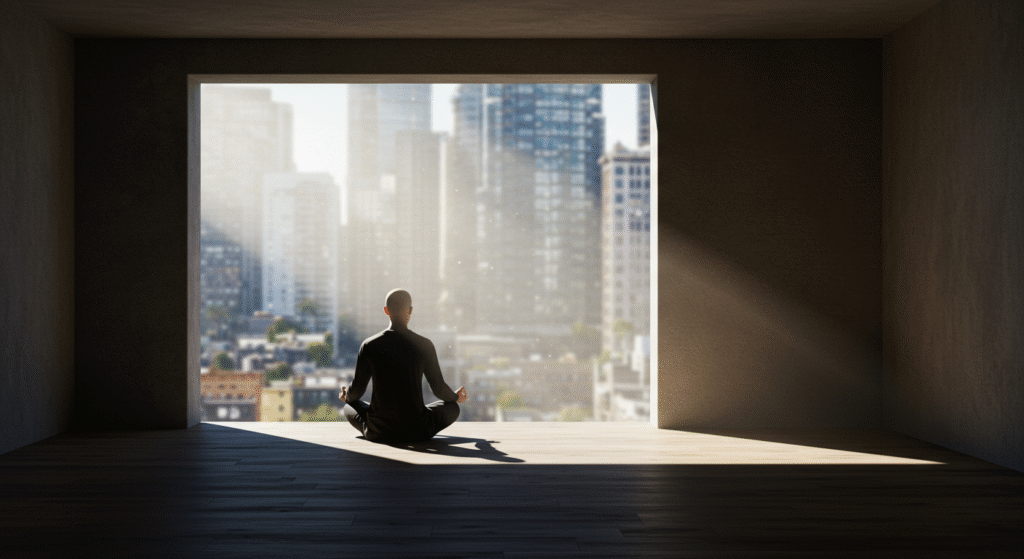
It is easy to become distracted while in a social media rabbit hole that adds tasks to your list that you’ll have a few seconds to process until your phone buzzes for another distraction. Instagram has always been prepared to tell you something. Maybe even phone calls. Meanwhile, old emails are piling up like the laundry you were going to fold last week. You’ve seen those people. Some people limit distractions and consistently get things done, finish things, and signal they reach their goal and make it look so easy. What’s the secret? Focus!
High performers master the art of obtaining results within the most efficient time and mobilizing efforts to get results flawlessly. They have learned that not every task on their ‘to-do’ list is worth their time, attention, or focus on a task worth doing among the few things that produce the results they desire. Have you seen their work areas or stuff?
It’s Not Chaos or Distraction
Phone hidden, alerts all turned off, and they are cutting off everything else to take time to do concentrated work. Everything is designed to keep their minds thinking within the zone.
Time isn’t just ticking by, it’s a weapon. High performers create blocks of time for what is called “deep work.” This is a block of time where there are no distractions, no task-switching, and simply complete focus to get you into the flow state. Big, heavy projects? They break it into smaller projects that allow the “impossible” to become consistent, baby steps of progress.
With every section you finish, it provides a little win, a little victory that builds on progress. This decreases the anxiety of big projects and changes productivity from the array of progress into a game that feels good to work on. There is visible progress, tangible progress, progress that brings a sense of accomplishment and motivation. One piece at a time, they climb the mountain.
When reflecting on high achievers, they can be viewed as the true experts in mindfulness. Our brains constantly want to get distracted-they wander away and pull us in the direction of notifications, social media distraction, and other random thoughts at any given moment. High achievers do not resist; they notice. When they recognize the mind has wandered, they need only give a small shrug in the mind and return their focus to their task. This is not magical; it is intentionality and a skill that develops the more it is utilized.
The difference is how deeply they embody their motivations and goals. Their goals are not on a to-do list, but in the background of their mind, driving decisions and setting priorities. There is an important distinction to note-you can only exclude distractions when you are fully aware of your “why” for doing something, and when you are connected to that “why,” you can redirect yourself as something pulls you away, thinking toward a thought or distraction. What is mindfulness means to high achievers is not an end to thinking, but awareness of the thinking and returning that thinking to purpose, clarity, focus, and confidence.
High achievers know that being focused does not mean working all the time, it also means learning to nurture the mind. This is why they purposely build breaks within their day. Whether that break is walking, a quick snack, stretching the body, or even dancing to get a little stress out, the point is that they replenish their mental energy and relieve burnout. Now, regarding multi-tasking, the answer is simple: they do not! To try to multitask ten things and complete three does not make you more productive; it creates chaos! Instead, they take the time to complete one task and then transfer to the next one.
Also Read: Why Failure Is the Best Teacher You Will Ever Have
Another very important element is organization. When you are using tools, planners, and apps to keep track while getting things done, you will have less or no mental clutter. And lastly, accountability is another secret weapon. Whether that accountability is based on a friend, a mentor, or a system they make for themselves, top performers have some form of accountability in place to keep them on track for continued success.
At the end of the day, high-performing people do not eliminate distractions. They manage distractions. The design of our world wants us to funnel our attention into one of a thousand directions at once, through notifications and an infinite loop of content consumption. Distractions are simply a way of life if someone isn’t being honest with you, if they say anything different.

The differentiator of high performers is that they know how to learn how to deal with distractions instead of allowing their distractions to dictate their attention. They have created spaces, habits, and mindsets that cause it to feel less like a battle to pay attention and more like a natural skill. Paying attention is not simply a bumper sticker approach that asks for more willpower. It is designing our life in a way that distractions do not have a chance to claim our attention.
Consider this your mind wants to drift off. It wants to scroll through TikTok for a fifth time, check Instagram, or get lost in irrelevant thoughts that don’t help you keep focused on the task at hand. High performers are aware of this, but rather than surrender to distractibility, they hit a pause. They ask themselves, “What would a high performer do now?” and intentionally move forward. High achievers’ environment, calendar, and mindset are constructed to make concentration easy.
Our phones are socialised in another room, led application blocking, and our messages are silent. Their workspace has been designed to create a focused time zone of deep focus, without the tiny notifications that demand attention.
Distractions are not only about distraction, but rather how it is managed. Allowing big work to be broken down into smaller, digestible pieces. They are tackling each piece into doable chunks and rack up their small-micro wins to pieces and maintain used overwhelm and boost motivation and attention.





